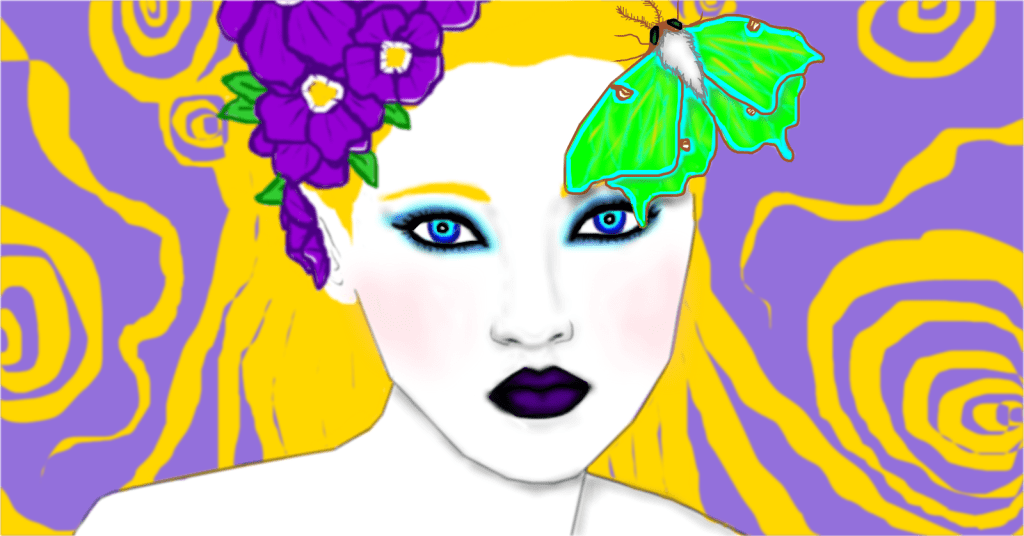HOME

I remember the first time I saw a luna moth, some years ago. I was about to go inside the front door of my home after a long day of work, and there beside the door frame was a huge, luminously green, winged creature. I wondered if it was a butterfly, so I did some research and discovered that the gorgeous visitor was called a luna moth. The next morning, the moth was still there. In fact, I got used to seeing the moth every time I stepped out of the house, but then just as suddenly as it had appeared that first day, the moth was gone.
Now, years later, I am more familiar with luna moths than I once was. In fact, I have come to view the life journey of a luna moth as one that contains poignant symbolism about humanity, transformation, and the brevity of life, among other topics.
Similar to butterflies, luna moths go through multiple stages of life before finally taking their final form; then they live for only 7 to 10 days. They have circular spots on their wings that look like moons (hence, the name “luna” which means moon), but it is also by the light of the moon- at night- when they are most active. Artificial lights attract moths, in general, but such lights can also lead to confusion, misdirection, and an unproductive life (which for a luna moth means no mating or egg-laying). These are only a few interesting facts about luna moths, but already parallels to humanity can easily be made.
Piaget, Erikson, Vgotsky, and their counterparts had much to offer in the analysis of how people evolve (physically, emotionally, cognitively, morally, and otherwise) in stages over the lifespan. Erikson suggested that when people are in their twilight years, they will feel—depending on how the person views and has processed his or her life up to that point—either ego integrity (self-acceptance and wholeness) or despair. Humanistic psychologists, such as Rogers and Maslow, describe self-actualization as the highest level of attainment for an individual. Carl Jung called this ultimate sense of “wholeness” individuation. Whatever the label, through the lens of the luna moth paradigm, is this the time when humans are finally in full form, when they have made peace with the past and all it contained so that they are finally ready to live unencumbered, to reach their full potential, to metaphorically fly?
When I look back on my own life, the memories of myself are familiar and foreign at the same time. I am not that girl; I am no longer that woman, but I knew them well. A life that lasts 100 years or more is still fleeting. The important question is not how many years someone has lived, but how much of the person’s life was spent feeling worry, regret, anger, unworthiness, and other negative emotions, and how much time was spent feeling emotionally free, positively transformed by his or her life experiences- including the mistakes and heartaches- joyfully embracing each and every moment of life. I can only imagine reaching such a nirvana myself, but I continue to strive- as so many of us do- toward my luna moth days.
The world will ask you who you are, and if you don’t know, the world will tell you.
C.G. Jung
